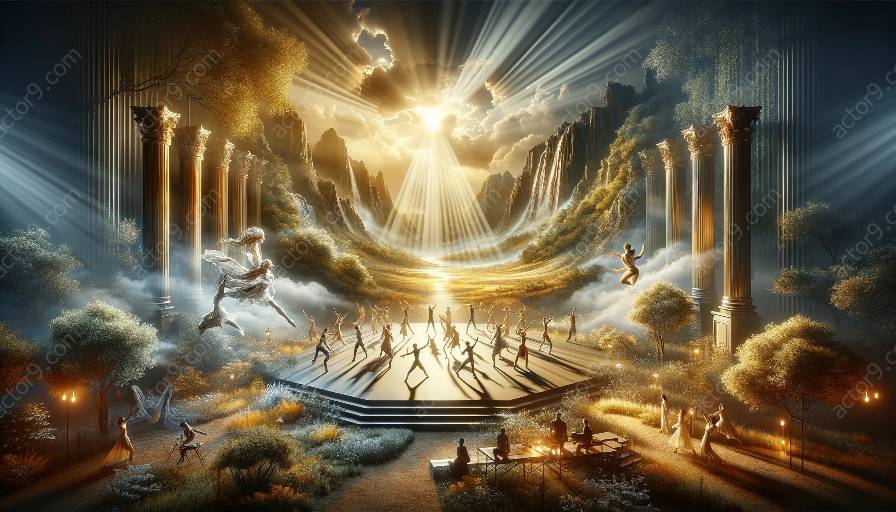Physical theatre is a form of performance that relies on the physicality of the actors and the innovative use of space to convey meaning. One of the crucial elements that contribute to the success of physical theatre performances is lighting. Lighting plays a pivotal role in creating a sense of space and dimension, influencing the atmosphere, and enhancing the visual experience for both the performers and the audience.
The Influence of Lighting on Space
In physical theatre, the use of lighting can transform the perception of space. Through strategic lighting design, the dimensions of the performance space can be altered, creating illusions of depth and height. Lighting can define the boundaries of the performance area, effectively highlighting different zones and guiding the audience's focus.
Enhancing Dimension Through Lighting
Lighting is instrumental in shaping the visual dimension of physical theatre performances. By employing techniques such as spotlighting, shadow play, and color manipulation, lighting designers can add layers of depth to the stage. These visual elements contribute to the creation of dynamic and multidimensional scenes, adding richness and complexity to the overall performance.
Creating Atmosphere and Mood
Furthermore, lighting significantly impacts the atmosphere and mood of physical theatre. Subtle changes in lighting can evoke different emotions and enhance the storytelling aspect of the performance. From creating an ominous and foreboding ambiance to conveying joy and celebration, lighting sets the tone and establishes the emotional landscape for the audience to immerse themselves in.
Directing Attention and Focus
Another essential function of lighting in physical theatre is its ability to direct the audience's attention and focus. Through carefully orchestrated lighting cues, certain elements of the performance can be emphasized while others are obscured. This manipulation of focus adds a layer of intrigue and suspense, guiding the audience through the narrative and the visual journey of the performance.
The Interaction of Lighting and Movement
Lighting interacts dynamically with the movement of the performers in physical theatre. The interplay of light and shadow can accentuate the physical gestures and expressions of the actors, heightening the impact of their movements. Lighting not only illuminates the performers but also becomes an active participant in the choreography, enhancing the overall visual spectacle.
Conclusion
In conclusion, lighting is a fundamental and intricately woven component of physical theatre performances. Its capacity to shape space, enhance dimension, create atmosphere, direct attention, and synergize with movement underscores its indispensable role in the art of physical theatre. Understanding and harnessing the potential of lighting in physical theatre not only elevates the visual experience but also enriches the storytelling and emotive nature of the performance.




































